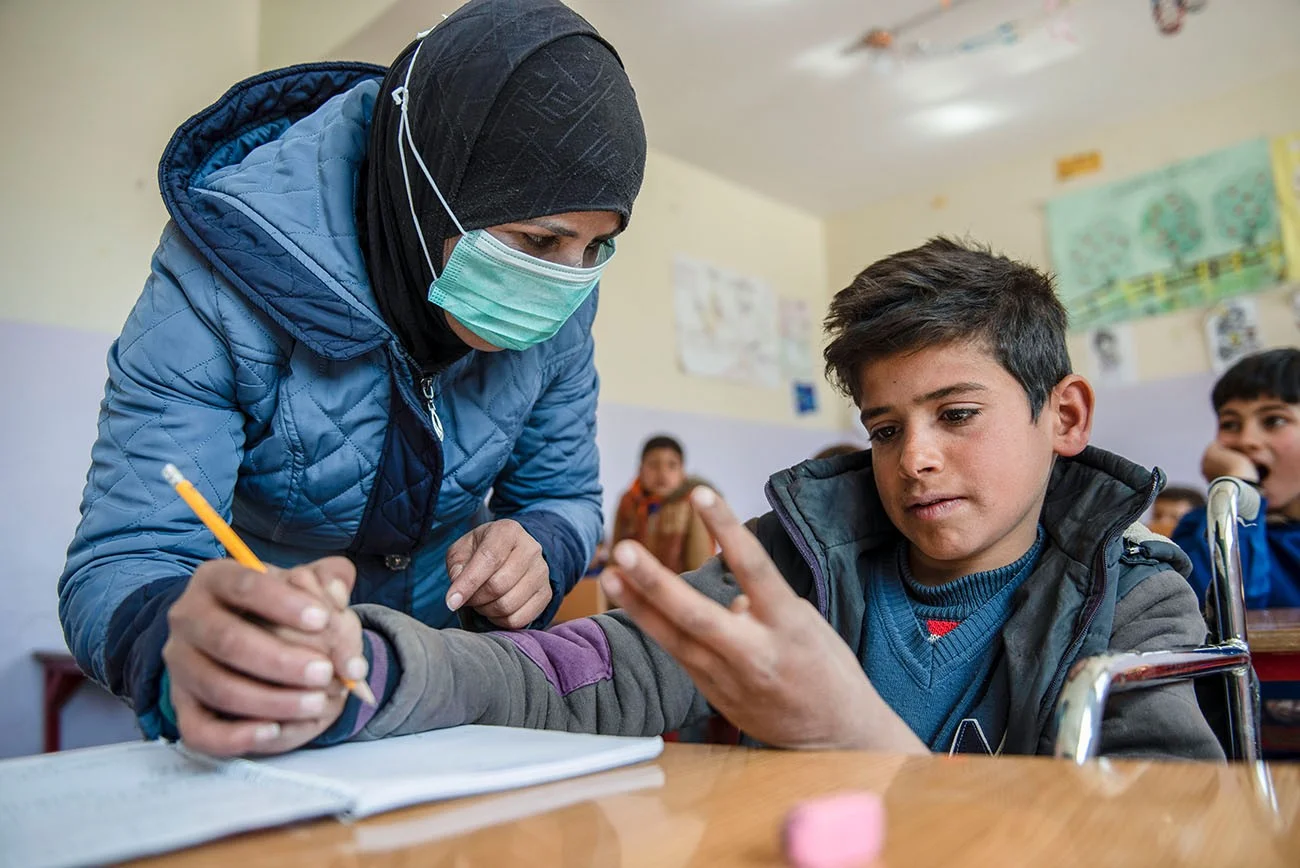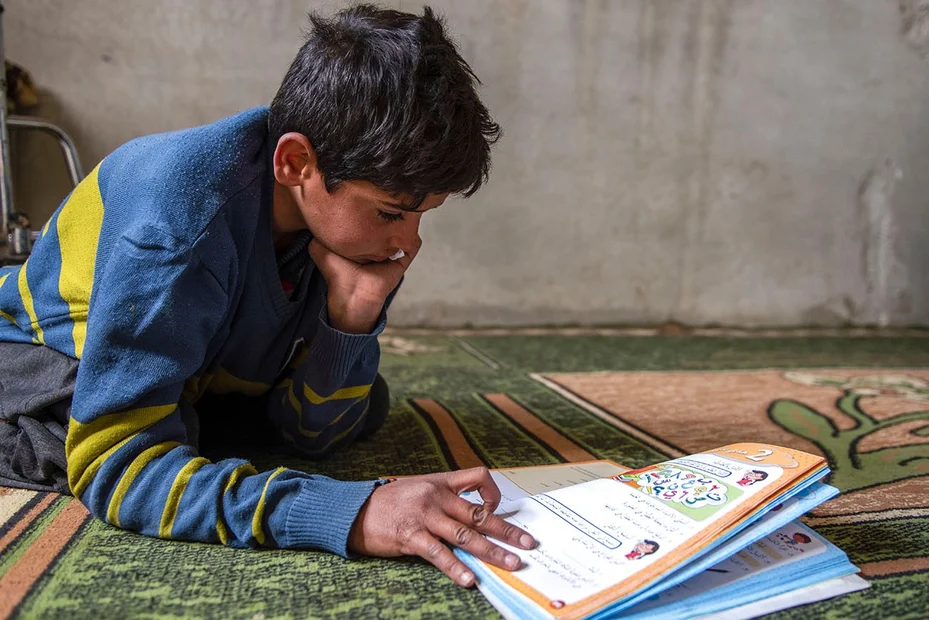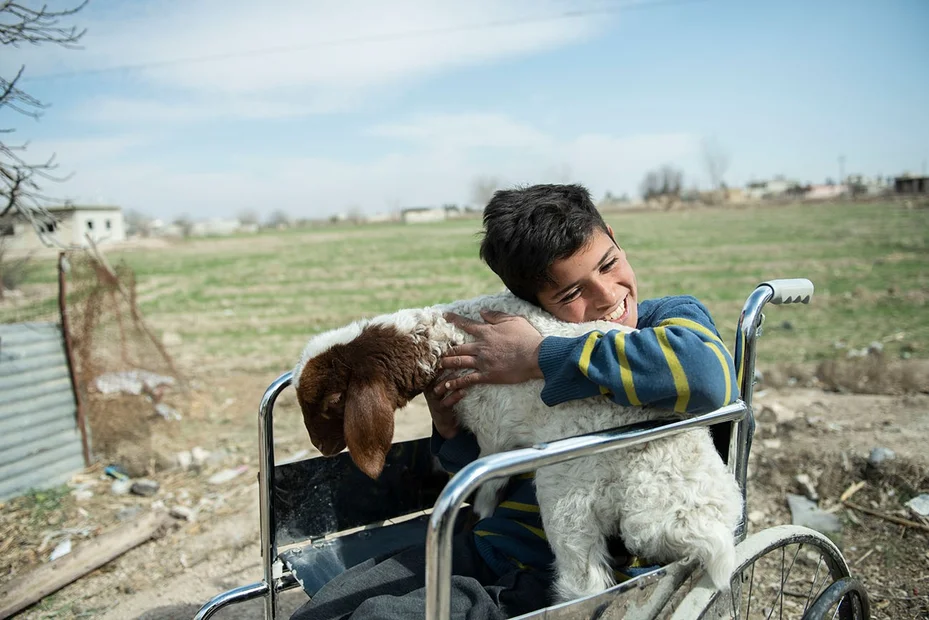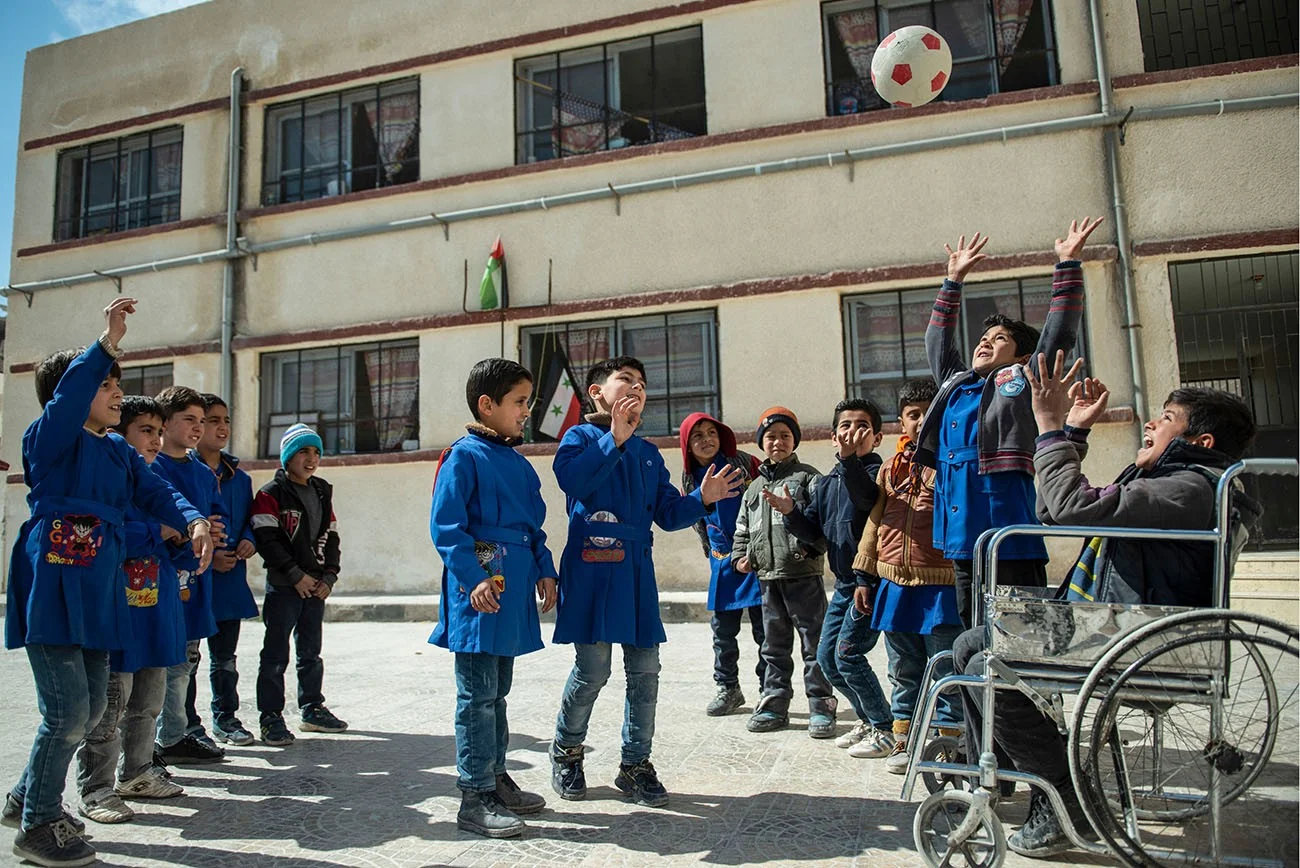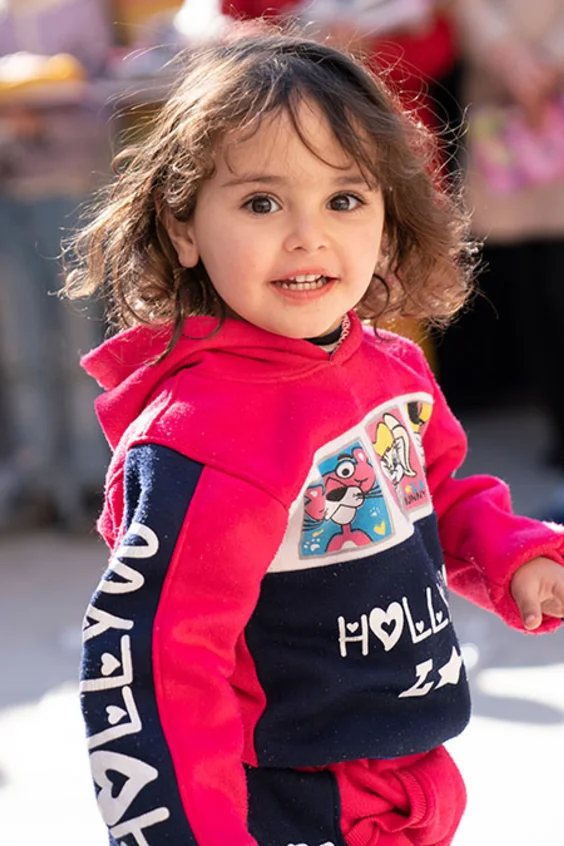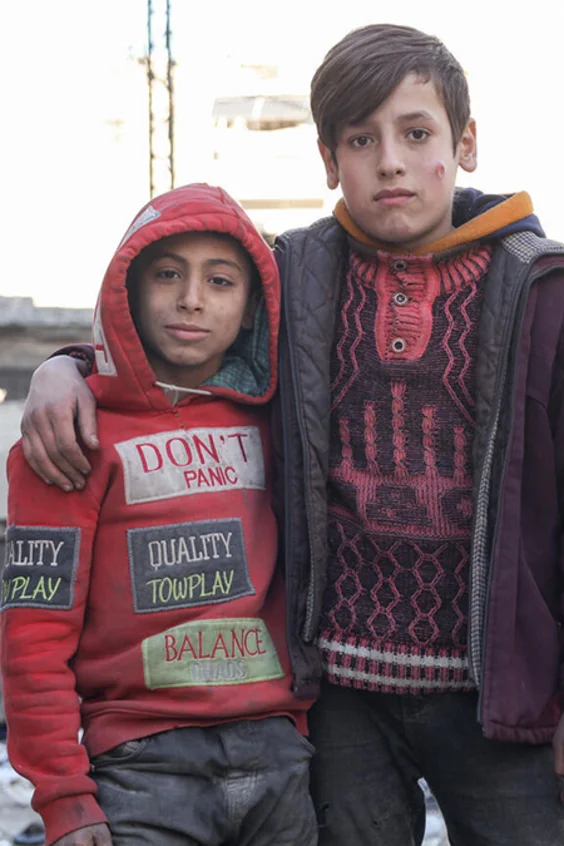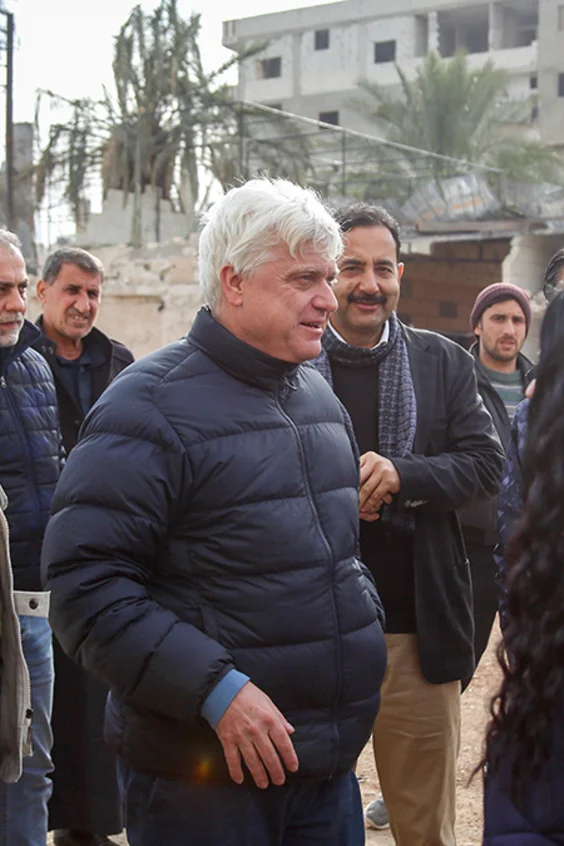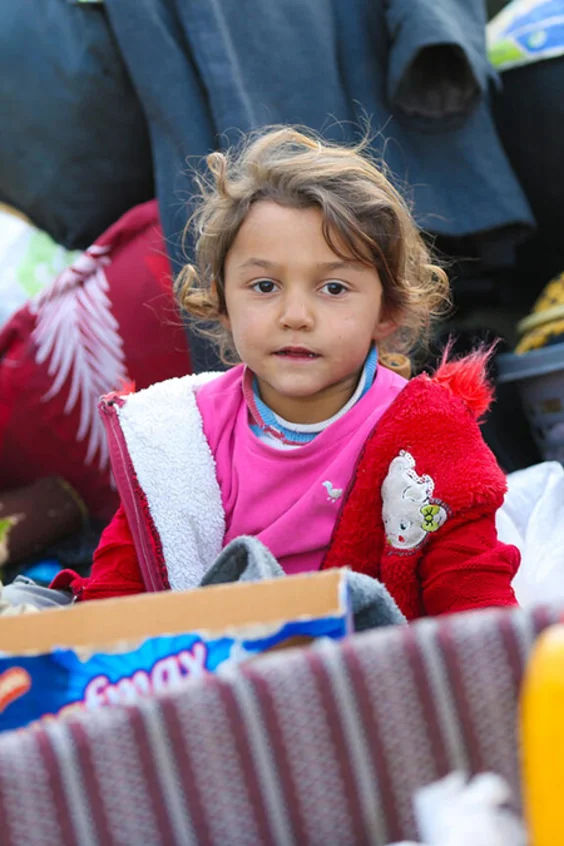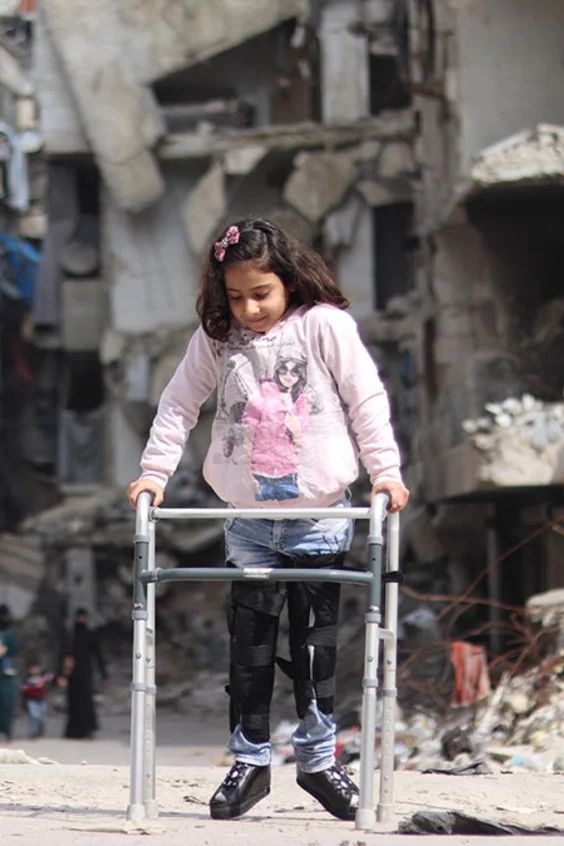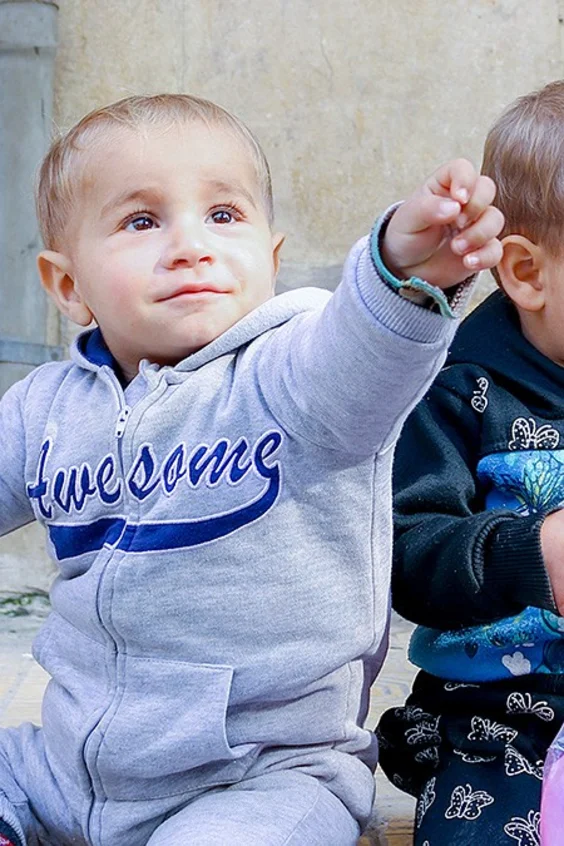After 12 years of war, Syria lies largely in ruins. Violence in the country continues to escalate, and there is no end in sight to the civil war. It is children who are suffering the most. Thousands of children have been killed in attacks during the war, with many more injured. Children like Azzam, whose story we would like to tell here.
Awad and his family have experienced the devastating effects of the conflict first hand. In 2015, a shell hit the building where the then 35-year-old Awad was sitting with two of his children, Azzam, 5, and Rakan, 4. His wife, Manal, rushed in to see what had happened. “I ran like crazy to find out that my little Rakan had passed away. My husband was conscious but badly injured, and Azzam came from under the rubble covered in blood and dust. It was a nightmare”, she said. Manal was carrying her son to get help when she suddenly noticed something was missing. The boy had lost a leg. Azzam and his father were taken to a hospital. The tragic incident resulted in paralysis of the father’s right leg, and the 5-year-old boy had to undergo several surgeries. “Azzam did not feel safe for a long time after the incident. He cried when he saw a drop of blood or heard a loud noise”, said Manal.
Azzam shares his fate with thousands of other Syrian children who have experienced similar suffering so early in their lives over the past 12 years. Since the conflict started in 2011, at least 13,000 children in Syria have been killed or seriously injured by the relentless war. The main causes of these deaths and serious injuries are landmines and explosive remnants of war. It is estimated that one in three towns and villages in Syria is contaminated by explosive residues, which are causing lifelong disabilities in a large number of girls and boys. Raising public awareness of these dangers is therefore crucial. Six million children are currently in need of child protection services. Since 2021, the United Nations Children’s Fund has educated more than 1.1 million children and over 200,000 parents and caregivers in Syria alone about the dangers of explosives. In addition, 11,350 children with severe physical disabilities received regular quarterly cash support payments from UNICEF through a social protection program.
The horrific event had a huge negative impact on Azzam’s mental state. To give him and his siblings the best possible support and help them regain a sense of normality, his parents enrolled them in school shortly after they returned to their hometown of Nashabieh in eastern Ghouta. “But Azzam had difficulties walking to school every day. The handmade wooden sticks he used instead of actual crutches did not support him well”, said Manal. “So he dropped out of school.”
An estimated 2.4 million children in Syria do not currently attend school, while a further 1.6 million children are at risk of dropping out. There are many reasons for this. 90 percent of families in Syria live in poverty, which has in some cases led to a dramatic increase in early marriage. Other reasons why children do not attend school include damaged and destroyed school buildings, overcrowded classrooms, shortages of textbooks, stationery and learning materials, and inadequate teacher training. In addition, more and more teachers are being forced to give up their profession because their salaries are no longer sufficient to meet their families’ basic needs.
Spending on education has also fallen dramatically, with the funds allocated by the Syrian government for education down by 78 percent in real terms compared with 2011. Funding was cut by 15 percent between 2021 and 2022 alone. As a result, only two thirds of all schools in Syria are able to provide education without any restrictions. Finally, around 3 million children have been internally displaced by the civil war, and this clearly also contributes to the fact that some 2.4 million children do not attend school. UNICEF helped provide learning opportunities for over 1.6 million children last year, including more than 12,000 children with disabilities.
Things started looking up again for Azzam in 2019, almost four years after that fateful day. He visited Al-Nashabieh Al-Mohdatheh Primary School, a school renovated and equipped by UNICEF to promote the inclusion of children with disabilities. Azzam and his sisters Sidra and Nour have not missed a single day of school since. “I’m glad I can go to school, have fun with my friends and learn”, Azzam confirms.
For 2023, UNICEF is aiming to reach 2.25 million children in Syria with learning materials and formal education. In addition, around half a million children are set to benefit from non-formal education. This refers to them learning social and life skills on an individual basis outside of a structured and regulated curriculum, for example in sport, volunteering or projects. UNICEF is due to train 44,000 teachers and educational staff this year.
